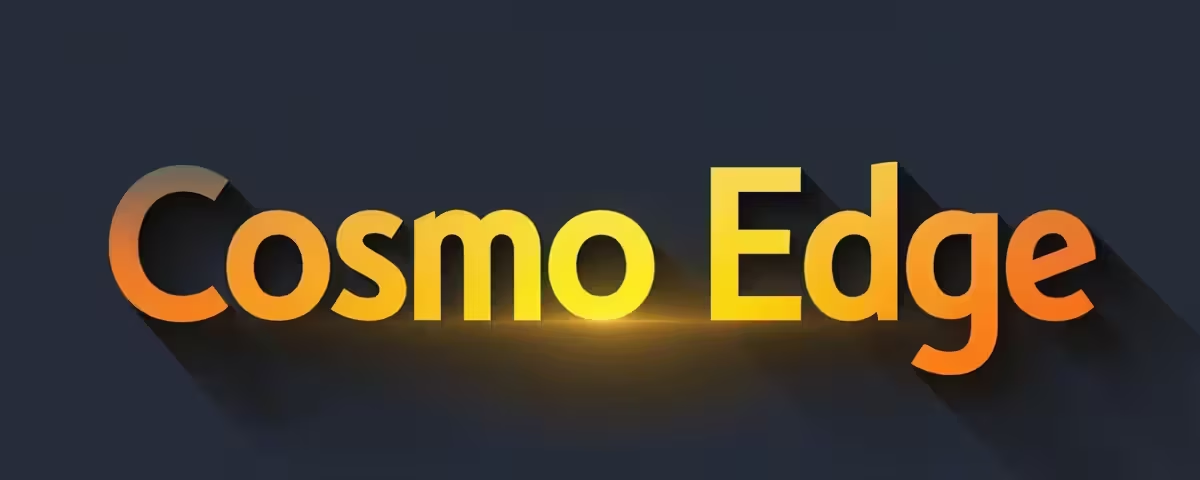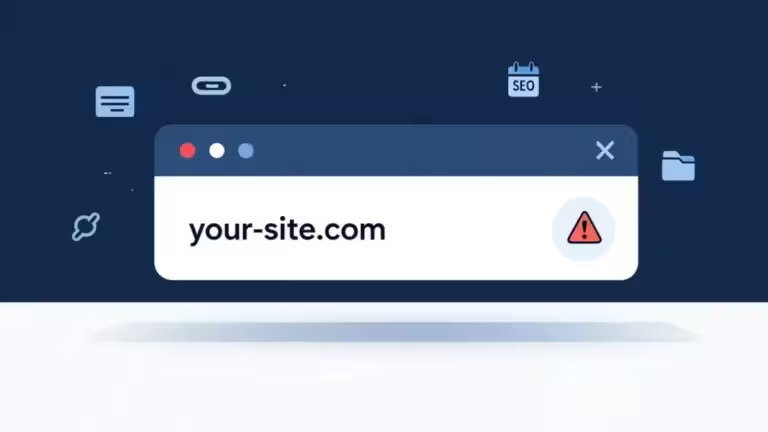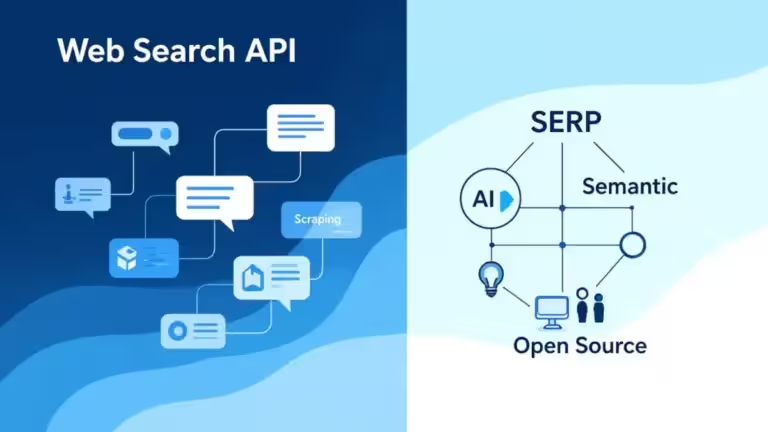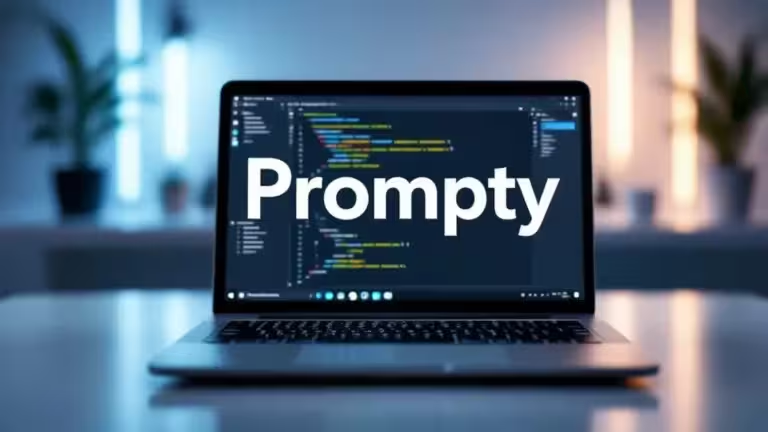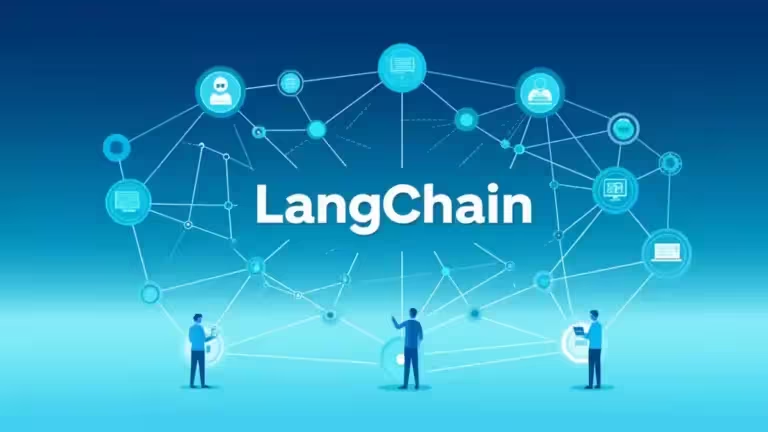Mention Tutorial: Master Setup in 30 Minutes
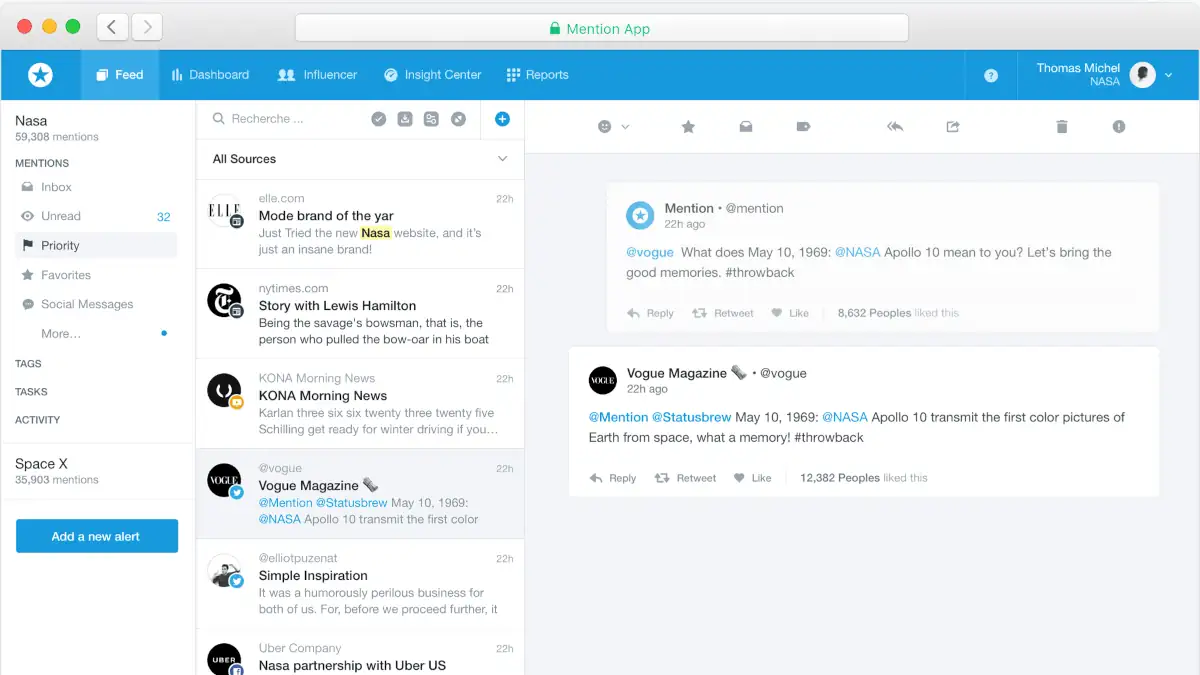
Mention is one of the most accessible media monitoring tools and social listening platforms available in France, with over 200,000 users worldwide. With an entry-level price of €29/month (€348/year) and an intuitive French interface, it is the ideal solution for small businesses, entrepreneurs, and SMEs looking to monitor their online reputation and set up competitive intelligence without spending thousands of euros.
This complete mention tutorial walks you through the setup of your media monitoring alerts step by step: from account creation to mastering advanced alert configuration. The goal: be fully operational in 30 minutes and detect your first relevant brand mention within the hour.
New to media monitoring tools? First check out our guide to choosing your media monitoring tool or our comparison of paid media monitoring tools.
Prerequisites for this mention tutorial:
- No technical skills in media monitoring required
- 30 minutes of available time
- A list of 3–5 keywords to monitor (your brand + priority competitors)
- Access to your social accounts for social listening (optional but recommended)
What you will achieve after this guide:
- Create and configure effective monitoring alerts
- Filter out noise to keep only relevant data
- Monitor your competitors with dedicated alerts
- Automate weekly monitoring reports
- Reply directly to mentions from inside Mention (community management)
- Measure ROI and efficiency of your monitoring
Context 2025: According to the Archimag-ChapsVision 2025 barometer, 75% of monitoring teams now consist of 1 to 3 people (compared to 66% in 2023), making the use of automated media monitoring tools like Mention critical. With 185 zettabytes of data generated worldwide in 2025 (a 40% increase since 2021 according to Statista), filtering relevant information is no longer optional but vital.
Recommended external resource: For deeper monitoring methodologies, see Asana’s complete guide to information monitoring, a recognized reference in project management and productivity.
Part 1: Account creation and initial setup (10 min)
Step 1.1: Sign up and start free trial
Action: Go to mention.com/fr
- Click “Try for free” (button top right)
- Fill in the registration form for your account:
- Professional email (recommended for credibility in monitoring)
- Secure password
- Company name or personal brand name
- Industry sector (choose from dropdown)
- Company size
- Primary monitoring objective: “Reputation monitoring” or “Competitive intelligence”
- Important: The free trial lasts 14 days with no credit card required. You will not be charged at the end of the trial.
- Confirm your email (check spam folder if not received within 2 minutes).
Estimated setup time: 3 minutes
Step 1.2: Guided onboarding
Mention provides an intelligent configuration assistant to simplify onboarding. Follow the 3 guided steps:
Screen 1: Your brand to monitor
Brand name: "Exact name"
Example: "La Pâtisserie de Marie"
Optional spelling variations:
- With/without accents: "La Patisserie de Marie"
- Common abbreviations: "Pâtisserie Marie"
- Short name: "Chez Marie"
Screen 2: Competitors to monitor
Competitor 1: "Exact name of main competitor"
Competitor 2: "Second competitor"
Competitor 3: "Third competitor"
Tip: Start with max 3 competitors.
You can add more later.
Screen 3: Monitoring preferences
Languages: French (+ English if international activity)
Geographic region: France (+ other countries if multi-market)
Priority sources:
☑ Web (news sites)
☑ Online news
☑ Blogs
☑ Forums
☑ Twitter/X
☑ Facebook
☑ Instagram
Estimated onboarding time: 4 minutes
Step 1.3: Discovering the media monitoring interface
Once onboarding is complete, you land on the main dashboard of the Mention media monitoring tool.
Navigation (left sidebar):
- Dashboard: Overview, global monitoring statistics
- Alerts: Manage monitoring alerts
- Feed: Real-time feed of all detected mentions
- Monitoring: Brand vs competitors comparative analysis
- Reports: Automated monitoring reports
- Settings: General settings and social listening connections
Central monitoring feed: Displays mentions detected in real time. Each mention contains:
- Source (Twitter, blog, news site, etc.)
- Text snippet with highlighted keyword
- Date and time of publication
- Estimated reach (number of people potentially exposed)
- Sentiment (positive, neutral, negative) – automatic analysis
- Possible actions (Like, Reply, Archive, Share)
Estimated exploration time: 3 minutes
Part 2: Advanced mention alert configuration (15 min)
Step 2.1: Optimize your main brand monitoring alert
The alert created during onboarding is basic. Let’s optimize it for efficient media monitoring.
Action: Sidebar > Alerts > Click your existing alert “Brand Name”
Optimal configuration for mention alerts:
Alert name: “Brand – All mentions”
Monitoring keywords (Keywords section):
Main keyword: "Exact brand name"
- Use quotation marks for exact search
- Example: "La Pâtisserie de Marie"
Add variations (click + Add keyword):
- Without quotes: La Pâtisserie de Marie
- Twitter handle for social listening: @YourAccount
- Hashtag monitoring: #YourBrand
- Domain URL: yoursite.fr (without https://)
- CEO name (if relevant for e-reputation): "Jean Dupont"
Advanced Boolean operators for configuration:
OR: "Pâtisserie Marie" OR "Chez Marie"
AND: "Pâtisserie" AND "Marie" AND "Paris 11"
NOT: see Exclusions section below
Sources to monitor (Sources section): Check ALL by default for this first mention configuration, refine later:
- ☑ Web (sites, blogs)
- ☑ News (online press, media monitoring)
- ☑ Forums
- ☑ Twitter/X (social listening)
- ☑ Facebook (public pages)
- ☑ Instagram (public hashtag posts)
- ☑ YouTube (titles and descriptions)
- ☑ TikTok (if included in your plan)
Languages and countries:
- Languages: French + English (if international)
- Countries: France (+ relevant markets)
Estimated time for setup: 5 minutes
Case study – Paris restaurant: A family restaurant in the 11th district relied only on free Google Alerts. Three fake 1-star reviews appeared on Google within 2 hours, planted by a malicious competitor. The owner found out 5 days later. Result: 40% loss in weekly bookings, about €3,000 lost.
After investing in Mention (€29/month) with instant alerts configured as in this tutorial, the owner now detects any negative review within 30 minutes. Annual cost: €348. Value preserved: €25,000 in yearly revenue. ROI: 72x.
Step 2.2: Configure exclusions (filter out noise in monitoring)
This is the feature that transforms a noisy media monitoring tool into an efficient brand monitoring system.
“Exclusions” section (Blocked keywords) in mention configuration:
Job/recruitment exclusions (very common):
emploi
recrutement
internship
job offer
application
resume
CV
Typical spam exclusions in monitoring:
make money
work from home
business opportunity
mlm
pyramid scheme
casino
poker
viagra (and variations)
Sector-specific exclusions:
Bakery example:
recipe (if you do not want recipes mentioning your brand)
baking classes (if you do not offer them)
How to identify exclusions for your mention alert:
- Let the alert run for 2–3 days without exclusions
- Note recurring irrelevant mentions in your monitoring feed
- Identify common keywords in these false positives
- Add them gradually to exclusions
- Goal: reduce noise by 30–50% for optimal monitoring
Estimated setup time: 3 minutes (+ continuous adjustments)
Step 2.3: Create a “Crisis” alert (critical reputation monitoring)
This monitoring alert will notify you IMMEDIATELY of sensitive mentions impacting your reputation.
Action: Alerts > Create Alert
Crisis alert configuration in Mention:
Name: "Brand – CRITICAL ALERTS"
Monitoring keywords:
"Brand name" AND (problem OR bug OR scam OR scandal
OR boycott OR dissatisfied OR disappointed OR "customer service"
OR refund OR complaint)
Sources for social listening: Priority on Twitter + Facebook + Forums
(uncheck Web/News to avoid noise)
Languages: French only (for maximum reactivity)
Notifications: IMMEDIATE EMAIL
Settings > Notifications > For this alert
> Check "Instant email for each new mention"
Recommended consultation frequency for your alerts:
- Crisis alert: Real-time (instant email)
- Main brand alert: Daily digest at 9:00 AM
- Competitor alerts: Weekly digest on Monday at 9:00 AM
Setup time: 4 minutes
Testimonial – Digital communications manager: Before using Mention, a cosmetics SME team spent 11 hours weekly on fragmented manual monitoring. After configuring mention alerts this way, time dropped to 4 hours per week while monitoring 3x more sources. False positives fell by 70% thanks to well-set exclusions, allowing the team to focus on strategic analysis instead of irrelevant data.
Additional resource: Learn how media monitoring tools trends 2025 integrate AI for early crisis detection.
Step 2.4: Competitor monitoring alerts (3 alerts)
Create a dedicated alert for each main competitor.
Action: Alerts > Create Alert (repeat 3x)
Configuration example:
Name: "Competitor X – Monitoring"
Keywords:
"Exact competitor name"
@CompetitorTwitterHandle
Focus on:
"new product" OR launch OR partnership
OR "fundraising" OR innovation OR acquisition
Sources: Priority News + Blogs + Twitter
(strategic info often appears here)
Frequency: Daily digest (real-time not required)
Exclusions: Same as main alert
+ "job offer" (unless you want to track recruitment too)
Pro tip: If a competitor is very active and generates too much noise, split into two alerts:
- “Competitor X – Strategic” (products, partnerships)
- “Competitor X – Communication” (social posts, press articles)
Estimated setup: 3 minutes × 3 = 9 minutes (can be done later)
Part 3: Connecting social accounts (5 min)
Replying directly inside Mention saves significant time.
Step 3.1: Connect Twitter/X
Action: Settings > Social Accounts > Connect Twitter
- Click “Connect Twitter account”
- Authorize Mention to access your Twitter account
- Select the account to connect (if multiple)
- Test: Find a Twitter mention in your Feed > Click “Reply”
You can:
- Reply directly
- Retweet
- Like
- Follow the user
Step 3.2: Connect Facebook
Action: Settings > Social Accounts > Connect Facebook
- Click “Connect Facebook Page”
- Authorize Mention
- Important: Select your Facebook Page (not personal profile)
- Test: Facebook mention > “Reply” or “Like”
Facebook limitations:
- Only your page (posts and comments)
- Public pages mentioning your brand
- No monitoring of private groups (Facebook API limitation)
Step 3.3: Connect Instagram Business
Action: Settings > Social Accounts > Connect Instagram
Prerequisite: Instagram Business account (not personal)
- Connect your Facebook Page first (mandatory)
- Instagram links via Facebook
- Authorize access
Instagram limitations:
- Monitoring limited to public hashtag posts
- No access to stories (API limitation)
- No direct messages
Step 3.4: Define response workflows
Positive mention:
- Action: Always “Like”
- Response: Thank if relevant (avoid generic replies)
- Example: “Thanks Sophie for your feedback! Glad our [product] works for you 😊”
Neutral mention (informational):
- Action: Monitor, reply only if a question
- Target: Answer within 2 hours
Customer question:
- Action: Always reply within 2h
- Escalate to customer service if needed
- Template: “Hi [Name], thanks for your question. [Answer]. Let us know if you need more help!”
Negative mention (unfounded):
- Action: Polite reply + factual clarification
- Tone: Professional, never defensive
- Template: “Hi [Name], thanks for your feedback. Let us clarify: [explanation]. Have a great day!”
Legitimate complaint:
- Action: Immediate customer service takeover
- Template: “Hi [Name], sorry for this experience. Please contact us privately at [email/phone] so we can solve this quickly.”
Estimated time: 5 minutes (connections) + workflow definitions
Part 4: Automation and reports (10 min)
Step 4.1: Create your customized dashboard
Action: Dashboard > Customize
Recommended widgets:
1. Mentions Volume widget
- Period: Last 30 days
- Display: Line chart
- Use: Detect unusual spikes
2. Top Mentions widget
- Criteria: Reach
- Number: Top 10
- Use: Identify influencers and ambassadors
3. Sentiment Analysis widget
- Display: Pie chart
- Use: Quick view of overall tone
4. Sources Breakdown widget
- Display: Bar chart
- Use: Identify main monitoring channels
5. Comparison widget (available on higher plans)
- You vs competitors
- Metrics: Volume + Sentiment
- Use: Market positioning
Estimated setup time: 3 minutes
Step 4.2: Configure email notifications
Action: Settings > Notifications
Optimal configuration:
Critical alerts:
☑ Instant email for each new mention
Alert: "Brand – CRITICAL ALERTS"
Standard brand alerts:
☑ Daily digest at 9:00 AM
Alert: "Brand – All mentions"
Content: Summary + links to mentions
Competitor alerts:
☑ Weekly digest on Monday at 9:00 AM
Alerts: All competitor alerts
Deactivate:
☐ Email for every single mention (except critical alerts)
☐ Marketing emails (unless you want tips from Mention)
Estimated setup time: 2 minutes
Step 4.3: Create your automatic weekly report
Action: Reports > Create Report
Weekly report configuration:
Name: "Weekly Monitoring Report"
Type: "Weekly Summary"
Content to include:
☑ Mentions volume vs previous week (%)
☑ Top 5 mentions (by reach)
☑ Sentiment breakdown (positive/neutral/negative)
☑ Main sources (%)
☑ Related keywords (word cloud)
☑ Competitor comparison (if available)
Format: PDF (for sharing) + HTML (for reading)
Recipients:
- Your email
- Management (if relevant)
- Marketing team
Schedule:
Every Monday at 10:00 AM
(leaves 1h after daily digest at 9:00)
Estimated setup time: 3 minutes
Step 4.4: Integrations with your tools
Mention integrates with many platforms. Recommended setup:
Slack (if used):
- Settings > Integrations > Slack
- Choose channel: #monitoring or #marketing
- Configure: Critical alerts only
- Avoid spam: Do not send all mentions
Zapier (advanced automation): Examples of workflows:
- Mention detected → Add row to Google Sheets
- Negative mention → Create Zendesk ticket
- Influencer mention → Add to CRM
Google Analytics:
- Track traffic generated by mentions
- Settings > Integrations > Google Analytics
- Add UTM parameters
If you want to optimize your budget, check our full comparison of free vs paid media monitoring tools to see if Mention is the right choice for you.
Morning routine (15–20 min/day)
9:00–9:15 AM: Check daily digest email
- Open Mention’s “Daily Summary” email
- Scan mentions volume: Any unusual spike?
- Identify 3–5 priority mentions:
- High reach (>10K followers)
- Negative sentiment needing intervention
- Urgent customer question
- Mainstream influencer or media
9:15–9:25 AM: Actions in Mention dashboard
- Log into your Mention dashboard
- Feed > Filter by “Unread”
- For each priority mention:
- Read full context
- Decide: Reply / Archive / Share / Escalate
- Act immediately (saves time vs postponing)
- Archive handled mentions
Target metrics for effective media monitoring:
- <5 minutes per priority mention
- 80% of mentions handled in <20 minutes
- Response rate: >90% for customer questions
- Average response time: <2h for critical mentions
Reference data 2025: According to Archimag, 60.24% of professionals use newsletters as their primary monitoring distribution channel, followed by integrated sharing portals (26%). Impact measurement via consultation stats increased from 44% to 58% between 2023 and 2025, showing growing professionalization.
External resource: See Archimag’s analysis on monitoring practices.
Weekly routine (30 min/week)
Monday 10:00 AM: Analyze weekly report
- Download automatic PDF report
- Analyze trends:
- Mentions volume rising/falling: Why?
- Sentiment change: What caused it?
- Any new competitors mentioned?
- Emerging sources?
- Actions:
- Adjust exclusions if noise increases
- Contact identified influencers
- Share insights with team
- Adjust content strategy based on mentions
Friday 3:00 PM: Competitor monitoring
- Check competitor digest (received Monday)
- Note:
- Product launches
- Announced partnerships
- Marketing campaigns
- Major press mentions
- Share: 5-minute brief with sales/marketing team
Monthly routine (1h/month)
Last Friday of the month: Review and optimization
Metrics to analyze:
Mentions volume:
Month N: ___ mentions
Month N-1: ___ mentions
Change: +/- ___%
Sentiment:
Positive: ___%
Neutral: ___%
Negative: ___%
Evolution vs last month: ___
Top 3 mentioned topics:
1. _______________
2. _______________
3. _______________
Total estimated reach: ___ people
Optimizations:
- Refine exclusions: Reduce noise by another 5–10%
- Add keywords: New products, campaigns launched
- Competitor benchmark: Who performs better? Why?
- ROI calculation:
- Time saved: ___ h/month
- Time value: ___ € (hours × hourly rate)
- Mention cost: €29
- ROI: ___ x
Minimum ROI target: 3x (value €87 for €29 invested)
Case study – Independent consultant: A digital transformation consultant invested €348/year in Mention Essential. In the first month, alerts configured via this tutorial helped detect a partnership opportunity from a LinkedIn mention. Quick reaction within 2 hours led to an €18,000 contract that same year.
Beyond this, the consultant saves 6h/week on manual monitoring (~25h/month). At €80/h, that’s €2,000/month in value. Annual ROI: 69x (€24,000 value for €348 invested).
Industry statistic 2025: According to Insee, 34% of French companies with 10+ employees practiced data analysis in 2023, with 21% analyzing customer transaction data specifically. Tools like Mention fit into this data-driven decision-making trend.
Part 6: Advanced features (going further)
Technique 1: Complex Boolean alerts
For monitoring specific topics with multiple conditions:
("your brand" OR "your product")
AND (review OR test OR comparison OR feedback)
NOT (job OR recruitment)
Use case: Identify all product reviews and comparisons.
competitor
AND (fundraising OR acquisition OR partnership)
Use case: Strategic competitor monitoring.
Technique 2: Niche sector monitoring
Create a general sector alert (in addition to your brand):
Name: "Sector – Trends"
Keywords:
"sector keyword" OR "sector trend"
OR "sector innovation"
Example bakery:
"french pastry" OR "pastry trends 2025"
OR "bakery innovation"
Frequency: Weekly (high volume)
Use: Spot industry trends before competitors
Technique 3: Influencer identification
Action: Feed > Filter by “High Reach”
- Identify accounts with >10K followers mentioning your industry
- Check their profile: Relevant for your target audience?
- Build a “Potential influencers” list (spreadsheet)
- Reach out for collaborations
Stat: 73% of French companies active on social media expanded their client base through digital presence. Influencers accelerate this.
Technique 4: Advanced sentiment analysis
Mention provides automatic sentiment detection, but manual review of key mentions is essential:
Truly positive sentiment:
- Explicit compliments
- Recommendations
- Positive photos/videos
- Positive emojis
False positives (marked positive but neutral):
- Factual neutral mentions
- Questions with “good” (“is it good?”)
False negatives (marked negative but neutral):
- Positive sarcasm (hard for AI to detect)
- Negative words in a positive context
Action: Report misclassifications to Mention (improves algorithm).
Part 7: Troubleshooting and optimization
Problem 1: Too many mentions (>100/day)
Causes:
- Keywords too generic
- Too few exclusions
- Brand name is a common word
Solutions:
- Use exact search with quotes: “Exact name”
- Add 10–20 more exclusions
- Limit sources (disable generic Web, keep News/Blogs)
- Split alerts: One for brand exact, one for variations
Target: 10–30 relevant mentions/day for SMEs
Problem 2: Too few mentions (<5/day)
Causes:
- Overly restrictive search
- Brand little known/mentioned
- Limited sources
Solutions:
- Remove quotes for broader capture
- Add variations and common typos
- Enable ALL sources
- Add related keywords: products, executives, slogans
- Monitor your sector, not just your brand
Problem 3: Many false positives
Common cases:
- Brand = common word (“The Source” captures everything)
- Homonyms (restaurants with same name elsewhere)
Solutions:
- Exact search: “The Source”
- Add location context: “The Source” AND “Paris”
- Exclude cities: NOT (“Lyon” OR “Marseille”)
- Refine progressively over 1–2 weeks
Problem 4: Missed mentions (found elsewhere)
Causes:
- No exact keyword (indirect reference)
- Source not covered (WhatsApp, Telegram)
- Private/protected content
Solutions:
- Add synonyms and descriptions: “Best pastry Paris 11”
- Combine with Google Alerts as backup
- Accept limitations: No tool captures 100%
Reality: A good tool captures 70–85% of public mentions. That’s already significant.
Checklist: Your first month with Mention
Week 1: Setup and discovery
- Account created and confirmed
- Main brand alert configured
- 3 basic exclusions added
- Social accounts connected (at least Twitter)
- First mention detected and read
- First reply sent (if relevant)
Goal: Get familiar with interface, detect first mentions.
Week 2: Fine-tuning
- 10–20 exclusions added (noise reduced 30%)
- Competitor alerts created (min 3)
- Dashboard customized
- Email notifications configured
- First weekly report received and read
Goal: Optimize signal-to-noise, automate reporting.
Week 3: Routine and analysis
- Daily routine established (15–20 min each morning)
- 5+ mentions processed (replies, archiving)
- Weekly trend analysis: spikes, sentiment
- 1–2 potential influencers identified
- Insights shared with team
Goal: Active monitoring, first business insights.
Week 4: ROI calculation and decision
- Time saved vs manual monitoring: ___ h/month
- Value of insights: ___ € estimated
- ROI calculated: ___ x
- Decision: Continue (subscribe) or Stop
- If continue: Action plan for month 2
Decision:
- ROI > 3x → Subscribe (profitable)
- ROI 1–3x → Continue 1 more month, optimize
- ROI < 1x → Free tools may be sufficient
Conclusion: From beginner to expert in media monitoring with Mention
You now master mention alert configuration from A to Z. By following this step-by-step tutorial, you can:
- ✅ Configure effective mention alerts in less than 30 minutes
- ✅ Filter noise to keep only 10–30 relevant mentions/day
- ✅ Reply directly from the interface (community management)
- ✅ Automate weekly monitoring reports
- ✅ Monitor 3–5 competitors strategically
- ✅ Calculate your ROI every month
Real monitoring time investment:
- Initial setup: 30 minutes (once)
- Daily routine: 15–20 min/day
- Weekly analysis: 30 min/week
- Monthly total: 10–12h (vs 20–30h manual monitoring without tools)
Measured gain with Mention: 10–18h/month saved → 120–216h/year.
Adoption stats 2025: The Archimag-ChapsVision barometer shows 66% of professionals now combine free and paid tools (vs 62.57% in 2023). Newsletters remain the top distribution channel for 60.24% of users, while integrated sharing portals increased from 22% to 26% between 2023 and 2025.
Case study – Communication agency: A small Paris digital agency configured Mention following this tutorial. With only 2 part-time staff, they now handle monitoring for 8 clients. Time spent per client dropped from 15h to 6h weekly, while responsiveness improved significantly. The agency now charges €400/month per client for monitoring, generating €38,400/year for a Mention Business plan costing €1,188/year. ROI: 32x.
Your next step in media monitoring:
If you want to compare Mention with other media monitoring tools, see our 2025 tools trends guide covering the 5 biggest innovations in social listening and media monitoring.
For a full market overview, our comparison of paid media monitoring tools will help you decide if Mention is the best fit for your needs.
Start your free Mention trial today and apply this tutorial. You’ll be operational within the hour and ready to capture your first relevant mention before the end of the day 🎯
Navigation series “Media monitoring tools 2025”:
- Guide: How to choose your media monitoring tool?
- Detailed comparison of paid media monitoring tools
- Best free media monitoring tools
- Phoenix: Open-source solution for NGOs
- Media monitoring tools trends 2025 and FAQ
- Mention tutorial: Complete setup guide ← You are here
Your comments enrich our articles, so don’t hesitate to share your thoughts! Sharing on social media helps us a lot. Thank you for your support!
